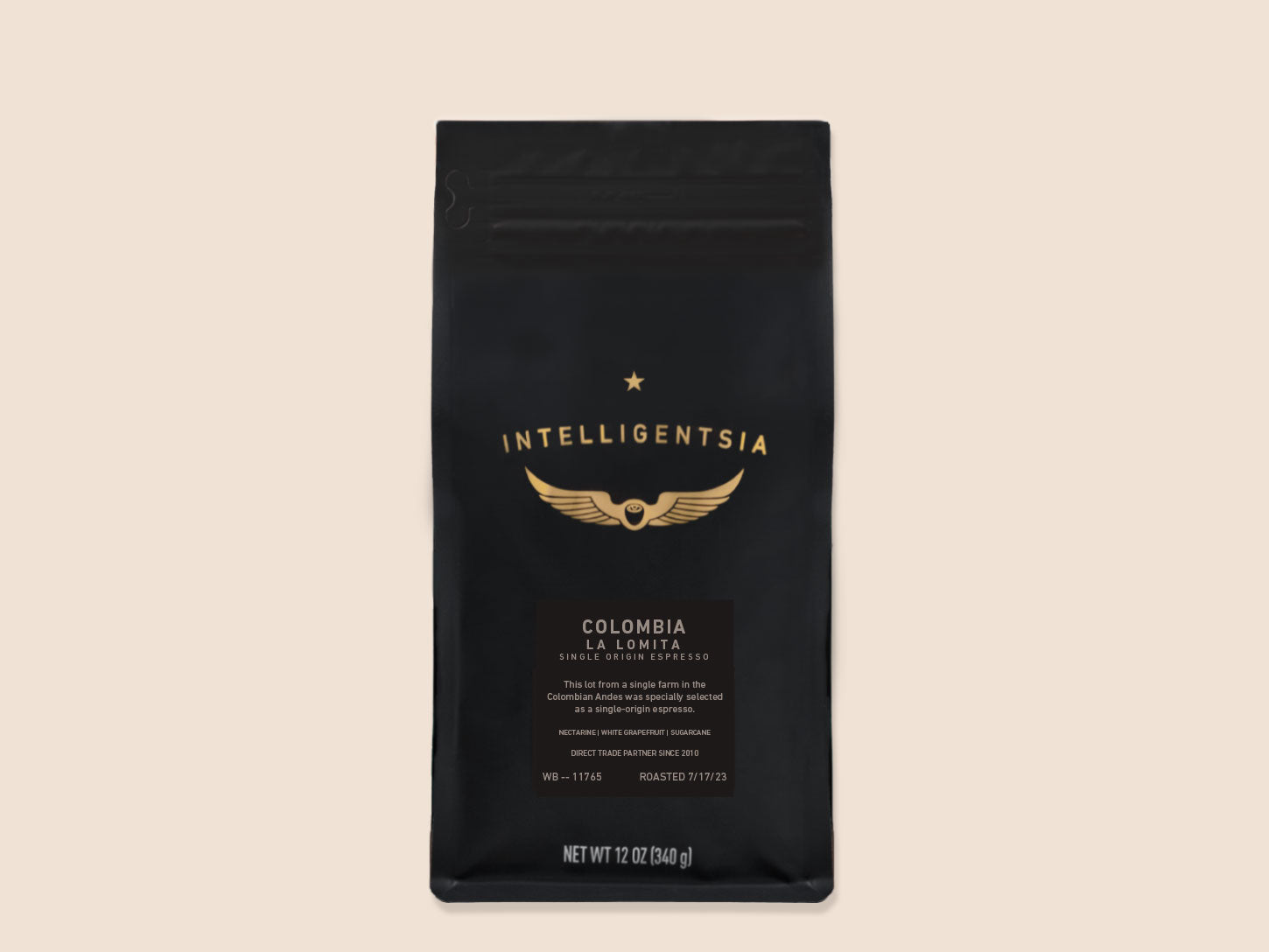SOE Single Origin Espresso – Showcasing Flavors from One Region
SOE Single Origin Espresso – Showcasing Flavors from One Region
Blog Article
Comprehending Coffee Beans: the Trip From Espresso to Blended Coffee Beans

The Beginnings of Coffee: A Worldwide Point Of View
While you could assume of coffee as a modern-day staple, its origins trace back centuries, intertwining with cultures across the globe. The story begins in Ethiopia, where tale says a goat herder called Kaldi found the invigorating effects of coffee beans after observing his goats romping energetically after consuming them.
As trade paths increased, coffee made its way to Europe in the 17th century, rapidly acquiring popularity. Each society added its one-of-a-kind twist to coffee preparation, enhancing its history.
Growing and Harvesting of Coffee Beans
As coffee's trip evolved, the focus shifted to the growing and harvesting of details bean ranges, specifically those used for coffee. You'll find that espresso beans typically come from Arabica or Robusta plants, each offering distinctive tastes. The excellent expanding conditions consist of high altitudes and rich, well-drained dirt, which boost the beans' high quality.
Throughout the harvest, choosing techniques differ. In some regions, employees hand-pick ripe cherries, making certain only the very best fruit goes to handling. In other locations, mechanical farmers are made use of, specifically on bigger farms. When the cherries reach peak ripeness for optimum flavor., timing is vital; you desire to collect.
When gathered, the beans are gotten ready for handling, which is crucial in identifying their last taste. Understanding the cultivation and collecting procedures offers you understanding right into what goes into your favorite espresso, enhancing your admiration for every cup.
Handling Techniques: From Cherry to Bean
Since you've found out about collecting coffee beans, allow's explore how those cherries transform into the coffee beans you enjoy. You'll see exactly how various harvesting strategies influence taste, complied with by the essential steps of fermentation and drying out. We'll break down the milling and grading procedure that establishes your coffee's top quality.
Harvesting Strategies Described
When it concerns coffee, comprehending harvesting strategies is crucial, because they directly impact the taste and quality of the beans you delight in. There are two primary approaches: selective selecting and strip picking. Careful selecting entails hand-picking only ripe cherries, guaranteeing you obtain the very best top quality beans. This technique commonly causes a richer flavor profile, though it's more labor-intensive. On the various other hand, strip selecting means harvesting all cherries at as soon as, no matter ripeness. While it's quicker and more affordable, this can result in a mix of flavors, affecting the end product. Eventually, the choice of gathering technique can greatly affect your coffee experience, so it deserves recognizing just how those beans made it to your mug.
Fermentation and Drying Out
After harvesting, the next action in processing coffee beans play a considerable function fit their taste. You'll locate that fermentation is important, as it aids break down the mucilage surrounding the beans, boosting their preference profile. Depending upon the approach, this procedure can last from a few hours to several days, with varying outcomes based upon temperature and moisture.
Sun-drying permits the beans to absorb flavors from the setting, while mechanical drying out assurances regular wetness levels regardless of climate. Proper drying out is vital to protect against mold and preserve the beans' quality, eventually affecting your cup of coffee.
Milling and Grading Process
As fermentation and drying out established the phase for taste growth, the milling and grading procedure assurances that just the very best coffee beans make it to your cup. This phase entails removing the external layers of the coffee cherry, including the parchment and husk. After milling, the beans are arranged by size and weight, making sure an uniform quality. You'll discover that grading helps recognize flaws and categorize beans, which affects taste and aroma. High-quality beans get a greater grade, resulting in a richer coffee experience. As soon as rated, the beans are ready for packaging and delivery, preserving their one-of-a-kind characteristics. This careful procedure is vital for supplying the exceptional preference you enjoy in every sip of your favorite mixture.
Roasting Techniques: Unlocking Taste Potential
When you roast coffee beans, the approach you choose can substantially affect the flavor profile. Understanding the connection between time, temperature level, and toasting techniques is vital to disclosing the possibility of your mixture. Allow's discover how these elements come together to produce the ideal cup.
Roasting Methods Clarified
While you might think that all coffee roasting methods yield the exact same outcomes, the reality is that each strategy exposes distinct flavor potentials in the beans. Drum toasting utilizes a turning drum to uniformly disperse heat, improving caramelization and producing visit here a balanced flavor. Air roasting, on the other hand, flows warm air around the beans, promoting a lighter roast with obvious level of acidity.

Effect on Flavor Profile
Different roasting techniques not only influence the procedure yet likewise considerably influence the flavor profile of the coffee beans. Dark roasts, on the other hand, bring out bold, great smoky flavors, sometimes concealing the bean's special attributes. Comprehending these nuances assists you value the artistry behind your cup of coffee, enhancing your total experience with every sip.
Time and Temperature Aspects
To launch the complete taste possibility of coffee beans, both time and temperature throughout the toasting procedure play significant functions. When roasting, you'll discover that greater temperatures can quickly establish tastes, however if you rush it, you might finish up with burned notes. Conversely, reduced temperatures enable a much more progressive flavor advancement, showcasing the beans' distinct characteristics.

Timing is equally as essential; extending the roast also long can bring about a loss of level of acidity and illumination, while also brief a roast might leave the beans underdeveloped. Finding that pleasant area calls for technique and trial and error. By adjusting these factors, you can disclose the abundant, complicated tastes hidden within each bean, developing a genuinely impressive coffee experience.
The Art of Blending: Crafting Special Coffee Accounts

Begin by selecting a base coffee that gives a solid structure. An intense Ethiopian bean can bring fruitiness, while a rich Brazilian coffee adds body.
As you mix, bear in mind that each mix narrates. You're not simply making coffee; you're developing an experience. So, take your time, preference regularly, and appreciate the journey of discovering your signature mix.
Brewing Approaches: Exactly How Preparation Influences Flavor
Blending coffee opens up a domain of taste opportunities, yet how you brew that mix can considerably influence your final mug. On the various other hand, a pour-over highlights the coffee's clarity and illumination, ideal for showcasing fragile notes.
Espresso, with its high pressure, produces a concentrated shot that accentuates sweetness and crema. If you choose a lighter brew, take into consideration a chilly brew technique; it yields a smooth, less acidic preference.
Ultimately, experimentation is key. Readjusting variables like water temperature, grind size, and brew time can transform your coffee's profile. Embrace the art of developing to uncover the flavors concealed in your coffee blends. The right method can raise your experience to brand-new elevations.
The Future of Coffee: Sustainability and Development
As the coffee industry advances, sustainability and technology are becoming vital for addressing ecological obstacles and conference customer needs. You'll see that more coffee business are embracing environmentally friendly practices, from sourcing beans fairly to executing lasting farming methods. These shifts not just aid the world but likewise enhance the high quality of the coffee you delight in.
You could see you could check here technologies like biodegradable packaging and water-saving developing approaches that minimize waste. Advanced innovation, such as blockchain, is also ending up being prominent, ensuring transparency in the supply chain, which allows you to map your coffee back to its beginnings.
Furthermore, buying local areas and supporting farmers through fair profession efforts fosters an extra sustainable coffee ecosystem. As you sip your next cup, bear in mind that your choices can add to a brighter future for coffee. By selecting sustainable brands, you're not just enjoying a beverage; you're making a favorable effect on the globe.
Regularly Asked Questions
What Is the Distinction Between Arabica and Robusta Beans?
Arabica beans are smoother, sweeter, and have a greater acidity, while robusta beans are stronger, much more bitter, and have more caffeine. You'll discover these differences in taste and fragrance when brewing your coffee.
Just How Does Altitude Affect Coffee Bean Taste?
Elevation influences coffee bean taste substantially. Greater elevations generate beans with brighter acidity and facility flavors, while reduced elevations usually produce beans that are heavier and much less nuanced. You'll observe these distinctions in your cup!
What Are the Wellness Perks of Alcohol Consumption Coffee?
Consuming alcohol coffee can boost your energy, boost psychological focus, and also boost physical efficiency. It's rich in anti-oxidants, may reduce the danger of particular conditions, and a knockout post can promote a much healthier metabolism when eaten in small amounts.
Can Coffee Beans Be Recycled for Brewing?
Yes, you can recycle coffee beans for developing, however the taste could be weaker. If you delight in experimenting, attempt reusing them in different ways, like cold brews or including in healthy smoothies for an extra kick.
How Should I Store Coffee Beans for Quality?
To maintain your coffee beans fresh, store them in an impermeable container in an awesome, dark area. Stay clear of subjecting them to wetness, warm, or light, as these variables can promptly weaken their taste and fragrance.
Recognizing Coffee Beans: the Trip From Espresso to Blended Coffee Beans.
Currently that you have actually found out concerning gathering coffee beans, allow's discover exactly how those cherries transform into the coffee beans you like.When you roast coffee beans, the method you pick can drastically impact the flavor profile - Single Origin Espresso.While you might think that all coffee toasting methods produce the same outcomes, the fact is that each method discloses one-of-a-kind taste potentials in the beans.Various roasting methods not just affect the process yet also considerably influence the taste profile of the coffee beans
Report this page